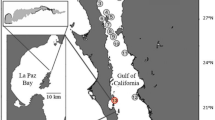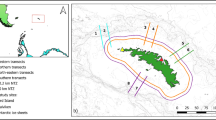Abstract
Breeding Eiders Somateria mollissima in the Baltic/Wadden Sea population have declined in recent decades, and several causes have been suggested. A recent study showed a modest increase in body mass from 2.20 kg by ca. 100 g during winter in Denmark, the main wintering area of the flyway population. This raises the question of whether Eiders could increase their body mass by an additional 200 g during pre-breeding to reach the average body mass of ca. 2.50 kg needed for successful reproduction. We analyzed this question by collecting Eiders at the Danish wintering grounds and pre-breeding grounds at Åland, Finland. Female Eiders increased their body condition (defined as scaled body mass index) from winter to the pre-breeding period, whereas males concurrently decreased in weight. The mean body mass of adult female Eiders was 2.23 kg in late winter, when they initiated spring migration. The mean female body mass at the pre-breeding grounds was 2.44 kg, an increase of 9.4% compared with females at the wintering grounds, while adult males decreased in weight by 3.4%. A decrease in gizzard mass was accompanied by a change in diet from large blue mussels Mytilus edulis at the wintering grounds to the small but more abundant mussels in the gizzard during pre-breeding. We conclude that female Eiders can reach a body mass of ca. 2.50 kg before breeding. Building up body condition for breeding is feasible at Åland; thus, difficulty in acquiring adequate resources for reproduction is unlikely to restrict local population size.
Zusammenfassung
Körperkondition von Eiderenten in dänischen Wintergebieten und in vorbrutzeitlichen Rastgebieten auf Åland
Die baltische bzw. Wattenmeer-Brutpopulation von Eiderenten Somateria mollissima ist in den vergangenen Dekaden rückläufig. Verschiedene Gründe dafür wurden diskutiert. Eine aktuelle Studie zeigte eine leichte Zunahme der Körpermasse um ca. 100 g bei insgesamt 2,20 kg während des Winters in Dänemark, dem Hauptüberwinterungsgebiet dieser Flyway-Population. Dies brachte die Frage auf, ob Eiderenten in der Vorbrutphase ihre Körpermasse um zusätzliche 200 g erhöhen können, um ein für eine erfolgreiche Reproduktion benötigtes durchschnittliches Körpergewicht von ca. 2,5 kg zu erreichen. Wir untersuchten diese Frage, indem sowohl in den dänischen Wintergebieten als auch in den vorbrutzeitlichen Rastgebieten auf Åland Eiderenten gesammelt und gewogen wurden. Eiderenten-Weibchen steigerten ihre Körperkondition (definiert als skalierter Körpermasse Index) vom Winter in die Vorbrutzeit, wohingegen Männchen zeitgleich im Gewicht abnahmen. Die mittlere Körpermasse adulter Weibchen lag bei 2,23 kg im Spätwinter kurz vor Beginn des Frühjahrszuges. Die mittlere Körpermasse der Weibchen in den vorbrutzeitlichen Gebieten lag bei 2,44 kg, was einer Zunahme von 9,4% im Vergleich zu den Weibchen in den Wintergebieten entspricht. Adulte Männchen dagegen nahmen um 3,4% ab. Eine Abnahme des Muskelmagengewichtes ging einher mit einem Wechsel in der Nahrung von großen Miesmuscheln Mytilus edulis in den Wintergebieten hin zu kleinen jedoch reichlicher vorkommenden Muscheln im Muskelmagen während der Vorbrutphase. Wir schließen daraus, dass weibliche Eiderenten ein Körpergewicht von bis zu 2,50 kg vor der Brutzeit erreichen können. Der Aufbau von Körperkondition für das folgende Brutgeschäft ist auf Åland also möglich, so dass nicht anzunehmen ist, dass dortige Ressourcenknappheit die lokale Populationsgröße beeinflusst.



Similar content being viewed by others
References
Alerstam T (1990) Bird migration. Cambridge University Press, Cambridge
Balk L, Hägerroth P-Å, Åkerman G, Hanson M, Tjärnlund U, Hansson T, Hallgimsson GT, Zebühr Y, Broman D, Mörner T, Sundberg T (2009) Wild birds of declining European species are dying from a thiamine deficiency syndrome. Proc Natl Acad Sci USA 106:12001–12006
Blums P, Nichols J, Hines J, Lindberg M, Mednis A (2005) Individual quality, survival variation and patterns of phenotypic selection on body condition and timing of nesting in birds. Oecologia 143:365–376
Cervencl A, Troost K, Dijkman E, de Jong M, Smit CJ, Leopold MF, Ens BJ (2014) Distribution of wintering common eider Somateria mollissima in the Dutch Wadden Sea in relation to available food stocks. Mar Biol 162:153–168
Christensen TK, Bregnballe T, Andersen TH, Dietz HH (1997) Outbreak of pasteurellosis among wintering and breeding common eiders Somateria mollissima in Denmark. Wildl Biol 3:125–128
ChristensenTK (2008) Factors affecting population size of Baltic common eiders Somateria mollissima. PhD thesis, Aarhus University, Denmark
Cohen J (1988) Statistical power analysis for the behavioral science, 2nd edn. Lawrence Erlbaum Associates, Hillsdale
Dansk Meteorological Institute (2017). http://www.dmi.dk/vejr/arkiver/vejrarkiv/
Dekinga A, Dietz MW, Koolhaas A, Piersma T (2001) Time course and reversibility of changes in the gizzards of red knots alternatively eating hard and soft food. J Exp Biol 204:2167–2173
Descamps S, Bêty J, Love OP, Gilchrist HG (2011) Individual optimization of reproduction in a long-lived migratory bird: a test of the condition-dependent model of laying date and clutch size. Funct Ecol 25:671–681
Ejsmond MJ, Varpe Ø, Czarnoleski M, Kozłowski J (2015) Seasonality in offspring value and trade-offs with growth explain capital breeding. Am Nat 186:E111–E125
Ekroos J, Fox AD, Christensen TK, Petersen IK, Kilpi M, Jonsson JE, Geen M, Laursen K, Cervencl A, de Boer P, Nilsson L, Meissner W, Garthe S, Öst M (2012a) Declines amongst breeding eider Somateria mollissima numbers in the Baltic/Wadden Sea flyway. Ornis Fenn 89:81–90
Ekroos J, Öst M, Karell P, Jaatinen K, Kilpi M (2012b) Philopatric predisposition to predation-induced ecological traps: habitat-dependent mortality of breeding eiders. Oecologia 170:979–986
Erikstad KE, Tveraa T, Bustnes JO (1998) Significance of intraclutch egg-size variation in common eider: the role of egg size and quality of ducklings. J Avian Biol 29:3–9
Guillemette M, Pelletier D, Grandbois JM, Butler PJ (2007) Flightlessness and the energetic cost of wing molt in a large sea duck. Ecology 88:2936–2945
Hario M, Rintala J (2009) Age of first breeding in the common eider (Somateria m. mollissima) population in the northern Baltic Sea. Ornis Fenn 86:81–88
Hario M, Mazerolle MJ, Saurola P (2009) Survival of female common eiders Somateria m. mollissima in a declining population of the northern Baltic Sea. Oecologia 159:747–756
Hobson K, Jaatinen K, Öst M (2015) Differential contributions of endogenous and exogenous nutrients to egg components in wild Baltic common eiders (Somateria mollissima): a test of alternative stable isotope approaches. Auk 132:624–632
Jaatinen K, Öst M (2016) Brain size-related breeding strategies in a seabird. Oecologia 180:67–76
Jaatinen K, Seltmann MW, Hollmén T, Atkinson S, Mashburn K, Öst M (2013) Context dependency of baseline glucocorticoids as indicators of individual quality in a capital breeder. Gen Comp Endocrinol 191:231–238
Jaatinen K, Öst M, Hobson KA (2016) State-dependent capital and income breeding: a novel approach to evaluating individual strategies with stable isotopes. Front Zool 13:24
Kautsky N, Johannesson K, Tedengren M (1990) Genotypic and phenotypic differences between Baltic and North Sea populations of Mytilus edulis evaluated through reciprocal transplantations. I. Growth and morphology. Mar Ecol Prog Ser 59:203–210
Kokko H (1999) Competition for early arrival in migratory birds. J Anim Ecol 68:940–950
Korschgen CA (1977) Breeding stress of female eiders in Maine. J Wildl Manage 41:360–373
Kurk CD (2008) The bill of evolution. Trophic adaptations in anseriform birds. PhD thesis, Leiden University, The Netherlands
Laursen K, Møller AP (2014) Long-term changes in nutrients and mussel stocks are related to numbers of breeding eiders Somateria mollissima at a large Baltic colony. PLoS One 9(4):e95851
Laursen K, Møller AP (2016) Your tools disappear when you stop eating: phenotypic variation in gizzard mass of eiders. J Zool 299:213–220
Laursen K, Asferg KS, Frikke J, Sunde P (2009) Mussel fishery affects diet and reduces body condition of eiders Somateria mollissima in the Wadden Sea. J Sea Res 62:22–30
Laursen K, Kristensen PS, Clausen P (2010) Assessment of blue mussel Mytilus edulis fisheries and waterbird shellfish-predator management in the Danish Wadden Sea. Ambio 39:476–485
Laursen K, Moller AP, Haugaard L, Öst M, Vainio J (2019) Allocation of body reserves during winter in eider Somateria mollissima as preparation for spring migration and reproduction. J Sea Res 144:49–56
Lehikoinen A, Kilpi M, Öst M (2006) Winter climate affects subsequent breeding success of common eiders. Glob Change Biol 12:1355–1365
Lehikoinen A, Christensen TK, Öst M, Kilpi M, Saurola P, Vattulainen A (2008) Large-scale change in the sex ratio of a declining eider Somateria mollissima population. Wildl Biol 14:288–301
Lehikoinen A, Jaatinen K, Öst M (2010) Do female ornaments indicate quality in eider ducks? Biol Lett 6:225–228
Lepage D, Gauthier G, Desrochers A (1998) Large clutch size increases fledging success and offspring quality in a precocial species. J Anim Ecol 67:210–216
Madsen FJ (1954) On the food habits of the diving ducks in Denmark. Dan Rev Game Biol 2:157–266
Meijer T, Drent R (1999) Re-examination of the capital and income dichotomy in breeding birds. Ibis 141:399–414
Møller AP (1994) Phenotype-dependent arrival time and its consequences in a migratory bird. Behav Ecol Sociobiol 35:115–122
Nehls G, Ketzenberg CA (2002) Do common eiders Somateria mollissima exhaust their food resources? A study on natural mussels Mytilus edulis beds in the Wadden Sea. Dan Rev Game Biol 16:47–61
Noer H (1991) Distributions and movements of eider Somateria mollissima populations wintering in Danish waters analysed from ringing recoveries. Dan Rev Game Biol 14:1–32
Öst M, Kilpi M (1998) Blue mussels Mytilus edulis in the Baltic: good news for foraging eiders Somateria mollissima. Wildl Biol 4:81–89
Öst M, Vitikainen E, Waldeck P, Sundström l, Lindström K, Hollmén T, Franson C, Kilpi M (2005) Eider females form non-kin brood-rearing coalitions. Mol Ecol 14:3903–3908
Öst M, Ramula S, Lindén A, Karell P, Kilpi M (2016) Small-scale spatial and temporal variation in the demographic processes underlying the large-scale decline of eiders in the Baltic Sea. Popul Ecol 58:121–133
Pedersen K, Dietz HH, Jørgensen JCA, Christensen TK, Bregnballe T, Andersen TH (2003) Pasteurella multocida from outbreaks of avian cholera in wild and captive birds in Denmark. J Wildl Dis 39:808–816
Peig J, Green J (2009) New perspectives for estimating body condition from mass/length data: the scaled mass index as an alternative method. Oikos 118:1883–1891
Piersma T (2002) Energetic bottlenecks and other design constraints in avian annual cycles. Integ Comp Biol 42:51–67
Ramula S, Öst M, Lindén A, Karell P, Kilpi M (2018) Increased male bias in eider ducks can be explained by sex-specific survival of prime-age breeders. PLoS One 13:e0195415
Rigou Y, Guillemette M (2010) Foraging effort and pre-laying strategy in breeding common eiders. Waterbirds 33:314–322
Rosenthal R (1994) Parametric measures of effect size. In: Cooper H, Hedges LV (eds) The handbook of research synthesis. Russell Sage Foundation, New York, pp 231–244
SAS (2012) JMP version 10.0. SAS Inc., Cary, NCA
Sénéchal É, Béty J, Gilchrist HG, Hobson KA, Jamieson SE (2011) Do purely capital layers exist among flying birds? Evidence of exogenous contribution to arctic-nesting common eider eggs. Oecologia 165:593–604
Steele BB, Lehikoinen A, Öst M, Kilpi M (2007) The cost of mate guarding in the common eider. Ornis Fenn 84:49–56
Van Gils JA, Piersma T, Dekinga A, Spaans B, Kraan K (2006) Shellfish dredging pushes a flexible avian top predator out of a marine protected area. PLoS Biol 4:2399–2404
Waltho C, Coulson J (2015) The common eider. T & D Poyser, London
Wright S (1968) Evolution and the genetics of population, vol 1. University of Chicago Press, Chicago
Acknowledgements
We thank Robin Juslin at Ålands Landskapsregering and hunters from Åland for collecting Eiders. We also thank the Danish hunters. Without the help of hunters this study would not have been possible. We obtained funding from the 15 June Foundation (ref. 2015-B-132) in Denmark (to K.L.) and the Swedish Cultural Foundation (ref. 2015-B-132) in Finland (to M.Ö.).
Author information
Authors and Affiliations
Corresponding author
Additional information
Communicated by F. Bairlein.
Electronic supplementary material
Below is the link to the electronic supplementary material.
Rights and permissions
About this article
Cite this article
Laursen, K., Møller, A.P. & Öst, M. Body condition of Eiders at Danish wintering grounds and at pre-breeding grounds in Åland. J Ornithol 160, 239–248 (2019). https://doi.org/10.1007/s10336-018-1609-1
Received:
Revised:
Accepted:
Published:
Issue Date:
DOI: https://doi.org/10.1007/s10336-018-1609-1




